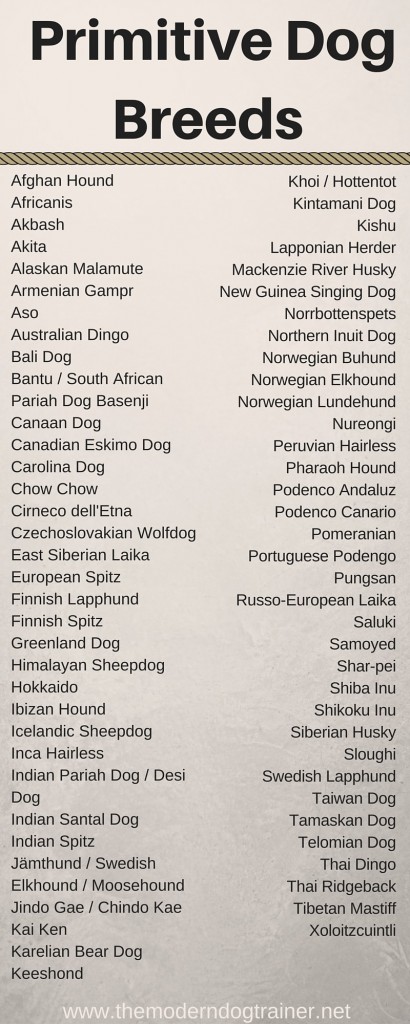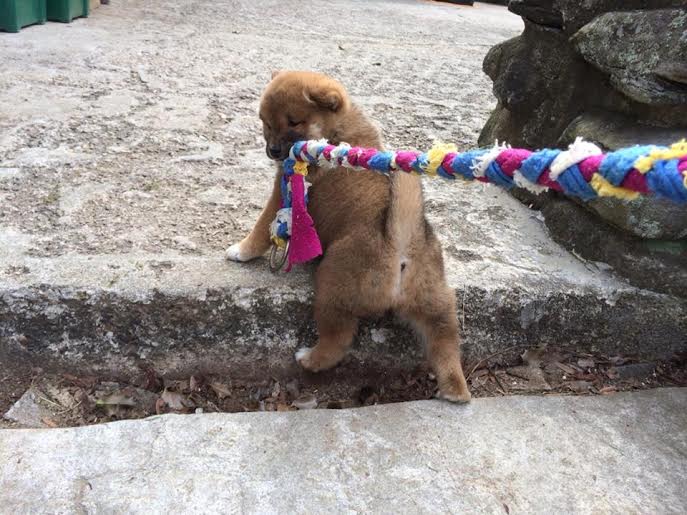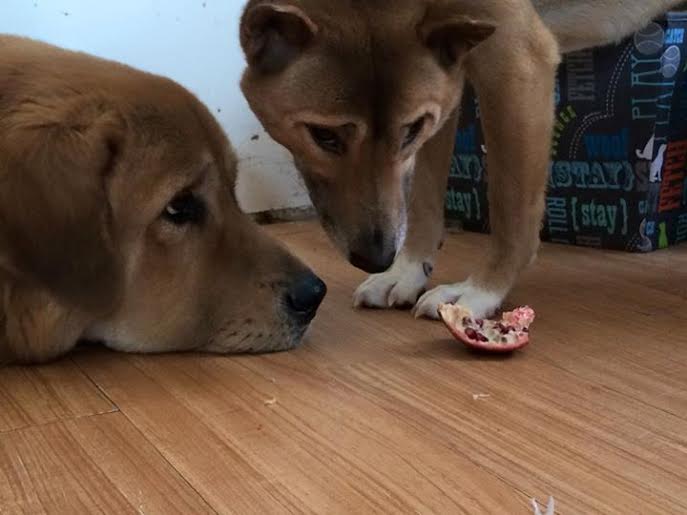Guest Post: A Passion for Primitive Dogs
This is a guest post by professional dog trainer, Molly Sumner, CDBC, CPDT-KSA, CBATI. She is an expert when it comes to training primitive dogs and is generously sharing her top 5 tips with us today. She now runs a website for primitive dogs and their owners: https://www.couchwolves.com/
Each night I fall asleep never having to remember to set an alarm clock. As dawn breaks so does the silence. A dull “woooo” sound begins from the crates on the first floor. It slowly gets louder and more punctuated. Then a few more voices join in until my canine alarm clock is going full blast. They are trying to tell me, as they do every morning, that they are awake and would like to go out. The only time I get a vacation from this routine is when I am away at an obedience trial. This is not due to any lack of attendance on their part, because I’m the crazy trainer showing primitive dogs in obedience. In reality it is because the orchestra ring leader is snuggling in bed with me, and when he has bed privileges he doesn’t want to get up till around noon. Lazy bones.
 My husband and I share our home with 5 Shiba Inus, a Cattle Dog mix, a Tibetan Mastiff, and a New Guinea Singing Dog. This seems like quite the mix of dogs, but they have one very strong thing in common and that is their primitive nature. To be clear, what I mean when I say “primitive dog” is a breed of dog who’s ancestral primitive nature is still intact. These dogs weave through the traditional breed groups making a pretty tapestry of shapes, sizes, and histories. But when you break them all down, a similar independent, sensitive, wise old soul is back there, ready to tell you that they know better. Some examples of primitive dogs are Africanis, Akitas, Alaskan Malamutes, Armenian Gampr, Basenji, Canaan Dog, Carolina Dog, Chow Chow, Finnish Spitz, Norwegian Elkhound, Pharaoh Hound, Saluki, Samoyed, Shar-pei, Swedish Lapphund and this is just a few. This short list (A longer list is available at the end of this article) gives you an idea of the variety of shapes, sizes, and jobs these dogs have, and their close resemblance to their canine ancestors, and/or selective breeding that has maintained behavioral and physiological traits going back 1000-5000+ years.
My husband and I share our home with 5 Shiba Inus, a Cattle Dog mix, a Tibetan Mastiff, and a New Guinea Singing Dog. This seems like quite the mix of dogs, but they have one very strong thing in common and that is their primitive nature. To be clear, what I mean when I say “primitive dog” is a breed of dog who’s ancestral primitive nature is still intact. These dogs weave through the traditional breed groups making a pretty tapestry of shapes, sizes, and histories. But when you break them all down, a similar independent, sensitive, wise old soul is back there, ready to tell you that they know better. Some examples of primitive dogs are Africanis, Akitas, Alaskan Malamutes, Armenian Gampr, Basenji, Canaan Dog, Carolina Dog, Chow Chow, Finnish Spitz, Norwegian Elkhound, Pharaoh Hound, Saluki, Samoyed, Shar-pei, Swedish Lapphund and this is just a few. This short list (A longer list is available at the end of this article) gives you an idea of the variety of shapes, sizes, and jobs these dogs have, and their close resemblance to their canine ancestors, and/or selective breeding that has maintained behavioral and physiological traits going back 1000-5000+ years.
Life with primitive dogs is a little different than life with other breeds. I mean sure, they are all dogs. But life with primitive dogs isn’t an owner/pet relationship. It’s more like a roommate agreement. They have their particular wants and needs and if you fail to understand them and find a way to manage them, you will end up with a huge problem on your hands. As my husband likes to say, “You don’t train a primitive dog, you come to an understanding”, and he is absolutely right. Many times trainers label these dogs “untrainable”, “willfull”, “stubborn”, or “dominant”. These labels only come out when a trainer or owner is butting heads with these dogs and their truly honest temperaments. I call it an honest temperament because they are utterly consistent and expect the same from you. They are strong communicators who will use a wide range of calming signals to express themselves. Trainers and owners who ignore them, many times end up on the frustrated end of the leash, or worse, bitten and bloodied.
In no way am I suggesting that primitive dogs are a greater bite risk or more aggressive than other breeds. However, I do believe that their tolerance for rude handling, compulsive training, and rude interactions with other dogs, is significantly less than breeds bred to be more tolerant. We created these breeds prior to the great Victorian genetic manipulation period and were never expected to be the center of attention in a family setting. Instead these dogs had a purpose to either hunt and kills other animals, guard property, pull, or herd. When not in use, these dogs were left to their own devices. They have an innate knowledge of what they want to be happy and usually a good chunk of that is to be left alone. They are also highly sensitive dogs and become intolerant of discomfort quickly. Enough repetitions of this and they will become unwilling to cooperate and eventually aggressive.

Today there is a growing population that enjoys breeds with these independent natures and it is becoming more and more important that trainers become familiar with how to be successful working with these kinds of dogs. I have clients come to me all the time telling me that their previous trainers hated primitive dogs, that they all are highly aggressive, or if it didn’t respond to compulsion based training, it couldn’t be trained. This is heartbreaking for an owner to hear and leads to many of these dogs getting dumped in shelters or left to an existence locked in a laundry room or outside kennel. It is the responsibility of modern progressive dog trainers to embrace the growing interest in these dogs and better understand their behavioral workings, motivations, and needs. Once these are met, owning, managing, and training these dogs is a breeze.
5 Tips for Training Primitive Dogs
1. If The Dog Is Failing – It’s Not Them, It’s You
Sorry but primitive dogs are very honest dogs. This means that if you’re rate of reinforcement is poor or you’re either too challenging or not challenging enough, a primitive dog will blow you off. The more this happens, the less they will want to interact with you and their relationship will continue to diminish until they actively avoid you. Keep training light, short and be ready to jump 2 steps ahead at any point. More than 5 or 6 repetitions is enough to bore most of these dogs and if they make a learning leap go with it. Don’t push them backwards or they will think your “game” is stupid and walk away.
2. You Can’t MAKE a Primitive Breed Do Anything
Molding a primitive dog just teaches the dog to avoid contact with you. Luring teaches the dog to sniff out treats before they are willing to work with you. Shaping and capturing tend to be the most powerful ways to train a primitive dog. They are very intelligent and when given the opportunity to work out operant tasks they will usually rise to the occasion very quickly. But this works both ways. If they know growling and biting is the only way to make you stop doing something they don’t like, they will stop communicating with calming signals and move to lunging whenever they perceive discomfort. If lunging doesn’t stop the discomfort they will escalate to biting. This is why knowing body language and teaching advocacy for what the dog is saying, is essential to a happy primitive dog household.

3. They Know You Better Than You Do
Primitive dogs are always watching and always working out the system. Every move you make and every gesture has been worked out in their heads. They know the difference between a recall that is for reward and a recall that is for the end of play because it is time to go to work. They know when you have a treat and when you don’t. These can lead to frustration for the owner when training “only works when a cookie is present” as well as Separation Anxiety, Resource Guarding, aggression while being handled, and leash reactivity. When called in to deal with behavior problems it is essential that a trainer see all the details prior to a problem situation to see what the dog is actually being cued by. It may be leagues away from where the owner thinks the cause is.
4. Self Interest is Your Guide
In my home I use very colorful terms of endearment with my dogs. It is an affectionate joke. But for many owners it is no joke. It is hard for many owners to get over the sense of self interest these dogs possess. Like I mentioned earlier, these dogs are more your roommate than your pet. These dogs, while they love you, are still out to get whatever it is they want, at whatever means necessary. But this is a powerful tool for trainers. Following methods like Karen Overall’s Deference Protocol, and other styles of, you get what you want, when I get what I want can create very harmonious households. I like to think Premack was channeling a primitive dog when we wrote his Principle because that will get you farther than anything else in your training.
5. Keep Your Heart Open
You can’t get mad at these dogs. They will simply walk away, go pee on something, and take a nap. You have to roll with the punches, appreciate their independent nature, and laugh at your mistakes. Otherwise these dogs will get inside your head and drive you insane. You will need multiple ways to train a behavior and don’t be afraid to start with classical conditioning. Most of the time the reason these dogs are challenging is because they are uncomfortable emotionally, not because they are dumb, wild or stubborn.

About the Author: Molly Sumner CDBC, CPDT-KSA, CBATI
Molly Sumner is a professional dog trainer and behavioral consultant. She lives in Frenchtown, New Jersey with her husband and house filled with primitive dogs, including Journey the worlds first competition titled New Guinea Singing Dog. Molly is the author of multiple articles for Barkpost, as well her blogs and loves giving voice to both her canine and human clients. She is currently working on book about primitive dog training and ownership. You can visit her blog at www.kindredcompanions.com or find her on Facebook.
Additional Resources for Dog Training Primitive Dogs
Reading:
- The Power of Positive Dog Training – by Pat Miller
- From Fearful to Fear Free: A Positive Program to Free Your Dog from Anxiety, Fears, and Phobias – by Marty Becker DVM , Mikkel Becker, Lisa Radosta
- The Other End of the Leash: Why We Do What We Do Around Dogs – by Patricia B. McConnell
Tools:
- Pupford Freeze Dried Dog Training Treats
- PoyPet No Pull Dog Harness, Reflective
- 10FT Training Leash for Dogs with Swivel Lockable Hook
Dog Training Business Tips
Receive valuable dog training business tips and resources right in your inbox! Subscribe to The Modern Dog Trainer now by submitting your name and email below. Don’t forget to let us know what you want to learn more about!



